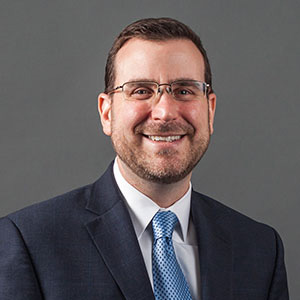In Part One, I addressed the argument by some libertarians that so-called “traditional property rights in land” are based in inductive, ground-up “common law court decisions,” but that intellectual property (IP) rights are top-down, artificial statutory entitlements. Thus, for instance, libertarian law professor, Tom Bell, has written in the University of Illinois Journal of Law, Technology & Policy: “With regard to our tangible rights to person and property, they’re customary and based in common law. Where do the copyrights and patents come from? From the legislative process.” 2006 Univ.Ill. J. L. Tech. & Pol’y 92, 110 (sorry, no link).
I like Tom, but, as I detailed in Part One, he’s just wrong in his contrast here between the “customary” “common law” court decisions creating property versus the “legislative process” creating IP rights. This is myth masquerading as history. As all first-year property students learn each year, the foundation of Anglo-American property law is based in a statute, and many property rights in land were created by statutes enacted by Parliament or early American state legislatures. In fact, the first statute — the Statute Quai Empotores of 1290 — was enacted by Parliament to overrule feudal “custom” enforced by the “common law” decisions at that time, creating by statutory fiat the basic foundational rule of the Anglo-American property right that property rights are alieanable.
As an aside, Geoff Manne asked an excellent question in the comments to Part One: Who cares? My response is that in part it’s important to call out the use of a descriptive historical claim to bootstrap a normative argument. The question is not who cares, but rather the question is why does Tom, Jerry Brito and other libertarians care so much about creating this historical myth, and repeatedly asserting it in their writings and in their presentations? The reason is because this triggers a normative context for many libertarians steeped in Hayek’s theories about the virtues of disaggregated decision-making given dispersed or localized knowledge, as contrasted with the vices of centralized, top-down planning. Thus, by expressly contrasting as an alleged historical fact that property arises from “customary” “common law” court decisions versus the top-down “legislative processes” creating IP, this provides normative traction against IP rights without having to do the heavy lifting of actually proving this as a normative conclusion. Such is the rhetorical value of historical myths generally — they provide normative framings in the guise of a neutral, objective statement of historical fact — and this is why they are a common feature of policy debates, especially in patent law.
What’s even more interesting is that this is not just a historical myth about the source of property rights in land, which were created by both statutes and court decisions, but it’s also an historical myth about IP rights, which are also created by both statutes and court decisions. The institutional and doctrinal interplay between Parliament’s statutes and the application and extension of these statutes by English courts in creating and enforcing property rights in land was repeated in the creation and extension of the modern Anglo-American IP system. Who would have thunk?
Although there are lots of historical nuances to the actual legal developments, a blog posting is ideal to point out the general institutional and systemic development that occurred with IP rights. It’s often remarked, for instance, that the birth of Anglo-American patent law is in Parliament’s Statute of Monopolies (1624). Although it’s true (at least in a generalized sense), the actual development of modern patent law — the legal regime that secures a property right in a novel and useful invention — occurred entirely at the hands of the English common law courts in the eighteenth century, who (re)interpreted this statute and extended it far beyond its original text. (I have extensively detailed this historical development here.) Albeit with some differences, a similar institutional pattern occurred with Parliament enacting the first modern copyright statute in 1709, the Statute of Anne, which was then interpreted, applied and extended by the English common law courts.
This institutional and doctrinal pattern repeated in America. From the very first enactment of copyright and patent statutes by the states under the Articles of Confederation, and then by Congress enacting the first federal patent and copyright statutes in 1790, courts then interpreted, applied and extended these statutes in common law fashion. In fact, it is a cliché in patent law that many patent doctrines today were created, not by Congress, but by two judges — Justice Joseph Story and Judge Learned Hand. Famous patent law historian, Frank Prager, writes that it is “often said that Story was one of the architects of American patent law.” There’s an entire book published of Judge Learned Hand’s decisions in patent law. That’s how important these two judges have been in creating patent law doctrines.
So, the pattern has been that Congress passes broadly framed statutes, and the federal courts then create doctrines within these statutory frameworks. In patent law, for instance, courts created the exhaustion doctrine, secondary liability, the experimental use defense, the infringement doctrine of equivalents, and many others. Beyond this “common law” creation of patent doctrines, courts have further created and defined the actual requirements set forth in the patent statutes for utility, written description, enablement, etc., creating legal phrases and tests that one would search in vain for in the text of the actual patent statutes. Interestingly, Congress sometimes has subsequently codified these judicially created doctrines and sometimes it has left them alone. Sometimes, Congress even repeals the judicially created tests, as it did in expressly abrogating the judicially created “flash of genius” test in § 103 of the 1952 Patent Act. All of this goes to show that, just as it’s wrong to say that property rights in land are based solely in custom and common law court decision, it’s equally wrong to say that IP rights are based solely in legislation.
Admittedly, the modern copyright statutes are far more specific and complex than the patent statutes, at least before Congress passed the American Invents Act of 2011 (AIA). In comparison to the pre-AIA patent statutes, the copyright statutes appear to be excessively complicated with industry and work-specific regimes, such as licensing for cable (§ 111), licensing for satellite transmissions (§ 119), exemptions from liability for libraries (§ 108), and licensing of “phonorecords” (§ 109), among others. These and other provisions have been cobbled together by repeated amendments and other statutory enactments over the past century or so. This stands in stark contrast to the invention- and industry-neutral provisions that comprised much of the pre-AIA patent statutes.
So, this is a valid point of differentiation between patents and copyrights, at least as these respective IP rights have developed in the twentieth century. And there’s certainly a valid argument that complexity in the copyright statutes arising from such attempts to legislate for very specific works and industries increases uncertainties, which in turn unnecessarily increases administration and other transaction costs in the operation of the legal system.
Yet, it bears emphasizing again that, before there arose heavy emphasis on legislation in copyright law, many primary copyright doctrines were in fact first created by courts. This includes, for instance, fair use and exhaustion doctrines, which were later codified by Congress. Moreover, some very important copyright doctrines remain entirely in the domain of the courts, such as secondary liability.
The judicially created doctrine of secondary liability in copyright is perhaps the most ironic, if only because it is the use of this doctrine on the Internet against P2P services, like Napster, Aimster, Grokster, and BitTorrent operators, that sends many libertarian IP skeptics and copyleft advocates into paroxysms of outrage about how rent-seeking owners of statutory entitlements are “forcing” companies out of business, shutting down technology and violating the right to liberty on the Internet. But secondary liability is a “customary” “common law” doctrine that developed out of similarly traditional “customary” doctrines in tort law, as further extended by courts to patent and copyright!
As with the historical myth about the origins of property rights in land, the actual facts about the source and nature of IP rights belies the claims by some libertarians that IP rights are congressional “welfare grants” or congressional subsidies for crony corporations. IP rights have developed in the same way as property rights in land with both legislatures and courts creating, repealing, and extending doctrines in an important institutional and doctrinal evolution of these property rights securing technological innovation and creative works.
As I said in Part One, I enjoy a good policy argument about the value of securing property rights in patented innovation or copyrighted works. I often discuss on panels and in debates how IP rights make possible the private-ordering mechanisms necessary to convert inventions and creative works into real-world innovation and creative products sold to consumers in the marketplace. Economically speaking, as Henry Manne pointed out in a comment to Part One, defining a property right in an asset is what makes possible value-maximizing transactions, and, I would add, morally speaking, it is what secures to the creator of that asset the right to the fruits of his or her productive labors. Thus, I would be happy to debate Tom Bell, Jerry Brito or any other similarly-minded libertarian on these issues in innovation policy, but before we can do so, we must first agree to abandon historical myths and base our normative arguments on actual facts.




